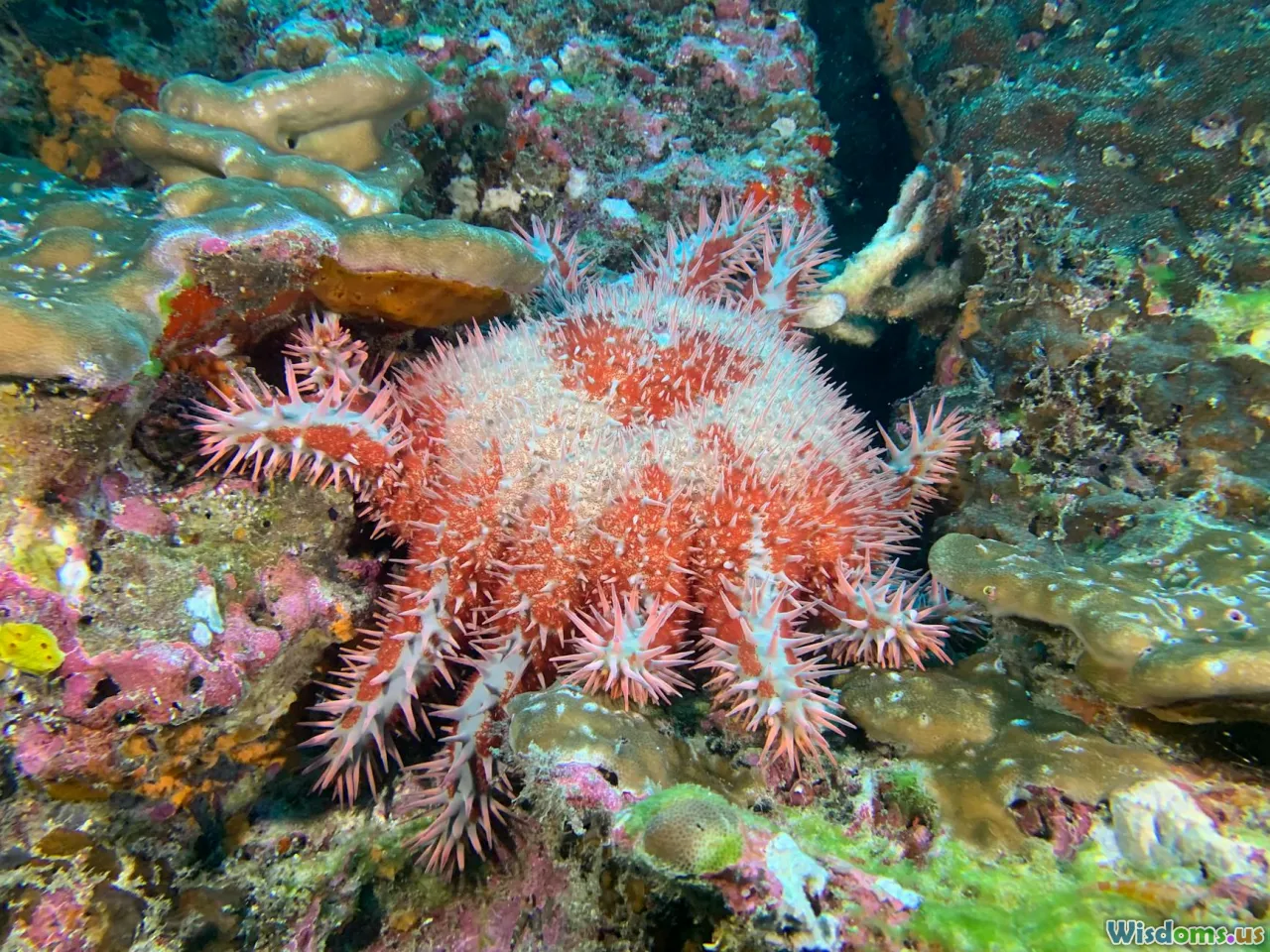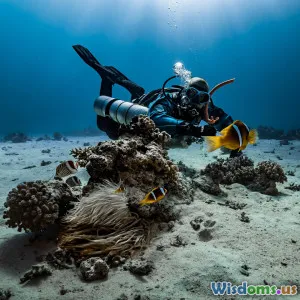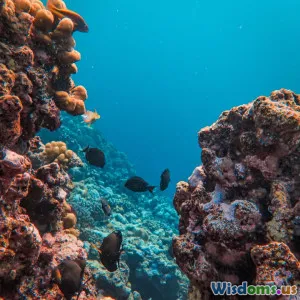
Discovering the Top Five Surprising Predators of Tropical Reefs
10 min read Unveil the top five unexpected predators inhabiting tropical coral reefs and their surprising roles in these vibrant ecosystems. (0 Reviews)
Discovering the Top Five Surprising Predators of Tropical Reefs
Tropical reefs are often celebrated for their colorful fish, dazzling corals, and the bustling marine life that makes them vibrant underwater cities. However, hidden within this dazzling display lies a set of unexpected predators that play a pivotal role in maintaining reef health and biodiversity. These creatures, rarely spotlighted in popular understanding, steer the delicate balance of reef ecosystems in ways that might surprise even seasoned marine enthusiasts.
This article uncovers five of the most surprising predators inhabiting tropical reefs, examining who they are, how they hunt, and why their presence matters. As threats like climate change and overfishing challenge reefs worldwide, understanding these predators is key to effective conservation strategies.
The Intricacies of Tropical Reef Ecosystems
Coral reefs are among the most diverse and productive ecosystems on Earth. They support roughly 25% of all marine species, despite covering less than 1% of the ocean floor (NOAA, 2021). Reefs function through complex food webs, where predators play crucial roles controlling species populations and preventing overgrowth of algae that could smother corals.
Surprisingly, some of the most impactful reef predators are not the large or flashy animals we expect, such as sharks or groupers, but rather obscure or underestimated hunters with fascinating adaptations.
1. The Banded Coral Shrimp: Tiny Guardian and Aggressive Predator
At barely 2.5 centimeters long, the banded coral shrimp (Stenopus hispidus) is a remarkable example of a small predator with outsized influence. Known primarily as a cleaner species removing parasites from fish, this shrimp is also an aggressive hunter scavenging small invertebrates and occasionally preying on coral polyps.
Why the Shrimp is Surprising
One might assume such a tiny crustacean contributes little to reef predation, but these shrimp wield large claws relative to their size, used for grabbing prey and defending territory. Studies published in the "Journal of Experimental Marine Biology" suggest their cleaning behavior may offer a facade, enabling them to approach prey without triggering escape responses (Bauer et al., 2019). This dual role enriches coral reef food webs in unexpected ways.
Ecological Role
By controlling small parasite populations and scavenging dead material, the banded coral shrimp contributes to reef hygiene and nutrient recycling, supporting coral health indirectly.
2. The Flamingo Tongue Snail: A Camouflaged Coral Predator
Tropical reefs hide many mollusks, but the Flamingo Tongue snail (Cyphoma gibbosum) stands out visually with its vibrant orange and black patterned mantle. Yet behind its beauty lies a specialized predator strategy.
Feeding Mechanisms
This snail feeds exclusively on soft corals, primarily gorgonians. It uses a radula—a ribbon of tiny teeth—to scrape coral tissue without killing the entire colony. This feeding creates characteristic feeding scars but rarely leads to wholesale coral damage.
Impact on Reefs
Though seemingly harmful, research indicates that controlled grazing by the Flamingo Tongue may stimulate coral growth or reduce competition among coral species, thus fostering biodiversity. They are a classic example of an herbivore-like predator directly shaping coral community dynamics (Miller & Ginsburg, 2017).
3. The Peacock Mantis Shrimp: A Rapid Striking Predator
Known for extraordinary vision and lightning-fast strikes, the peacock mantis shrimp (Odontodactylus scyllarus) revolutionizes our perception of reef predators.
Specialized Hunting
This shrimp delivers blows with club-like appendages moving at 23 meters per second—one of the fastest animal movements recorded—capable of smashing snails, crabs, and even glass aquariums in captivity. Its compound eyes perceive polarized light and 12 color channels, enabling it to detect prey and predators with extraordinary precision.
Role in Ecosystem
As both predator and territory defender, the mantis shrimp shapes prey populations and competition for shelter spaces. Their predation regulates the numbers of smaller reef invertebrates, contributing to the fine balance of reef microhabitats.
4. The Trapeziid Crab: The Hidden Coral Farmer and Defender
Small and oft-overlooked, trapeziid crabs exhibit intricate relationships with their coral hosts. Unlike typical predators, they are both consumers and protectors.
Symbiosis with Corals
These crabs feed on coral tissue and mucus but fiercely defend their coral homes against starfish like Acanthaster planci, a notorious coral predator. Their aggression toward reef-damaging species results in indirect protection, ensuring coral survival and growth (Hoeksema & Moka, 1989).
Ecological Significance
Despite their minimal size, trapeziid crabs influence coral resilience, especially in reefs exposed to crown-of-thorns starfish outbreaks, whose predation can decimate large coral areas.
5. The Ribbon Eel: Stealthy Ambush Predator
The ribbon eel (Rhinomuraena quaesita), with its neon blue and yellow hues, may look like a reef decoration, but it is a skilled predator lurking amid coral crevices.
Hunting Strategy
Ribbon eels employ ambush tactics, patiently waiting for unsuspecting fish and crustaceans to swim within reach. Their elongated bodies and slender jaws allow them to extend and snap swiftly.
Population Influence
By preying on small fish species that can overgraze reef algae, ribbon eels contribute to maintaining the algal-coral balance, indirectly promoting coral health.
Why Understanding These Surprising Predators Matters
Coral reef conservation efforts have typically focused on visible large species, water quality, and coral restoration. Yet, understanding the roles of less obvious predators is crucial. They contribute to:
- Biodiversity Stability: Each predator controls specific prey populations, preventing dominance that can destabilize the ecosystem.
- Coral Health: Predators like trapeziid crabs defend coral colonies, while snails and shrimps manage coral-algae competition.
- Adaptive Resilience: Complex food webs allow reefs to adapt better to environmental stresses.
Dr. Maria Johnson, a marine ecologist at the University of Queensland, emphasizes, "The invisible network of reef predators often holds the key to reef survival. Conservation must embrace the complexity beyond headline species."
Taking Action: Supporting Reef Guardians
To protect these vital predators and reefs, consider:
- Supporting marine protected areas that conserve whole ecosystems, not just single species.
- Reducing pollution and coastal development that degrade reef habitats.
- Advocating for sustainable fishing practices that avoid removing crucial reef predators.
- Getting involved with citizen science projects monitoring reef biodiversity.
Conclusion
Tropical reefs are much more than alluring fish and coral. Their true marvel lies in the intricate ecological tapestry woven by surprising predators—from the tiny banded coral shrimp to the stealthy ribbon eel. Each plays a unique, indispensable role in sustaining the fractal complexity of reef life.
By expanding our understanding of these unexpected predators, we gain invaluable insights to protect and restore these vital ecosystems facing unprecedented threats. The next time you gaze into a tropical reef, remember: beneath the surface, a hidden drama of survival and balance unfolds, orchestrated by some of the ocean’s most astonishing hunters.
References
- NOAA Coral Reef Conservation Program. (2021). Coral Reefs 101.
- Bauer, L., et al. (2019). Behavioral Ecology of Banded Coral Shrimp. Journal of Experimental Marine Biology.
- Miller, A., & Ginsburg, R. (2017). The ecological roles of flamingo tongue snails. Marine Mollusk Studies.
- Hoeksema, B.W., & Moka, M.M. (1989). Association between trapeziid crabs and corals: mutualism or parasitism?. Marine Ecology Progress Series.
- Marshall, N.J., et al. (2007). Vision and predator-prey dynamics of the mantis shrimp. Nature Communications.
This deep dive invites readers to appreciate reef predators far beyond popular perception, encouraging conservation awareness vital to safeguard the future of tropical reefs.*
Rate the Post
User Reviews
Popular Posts



















